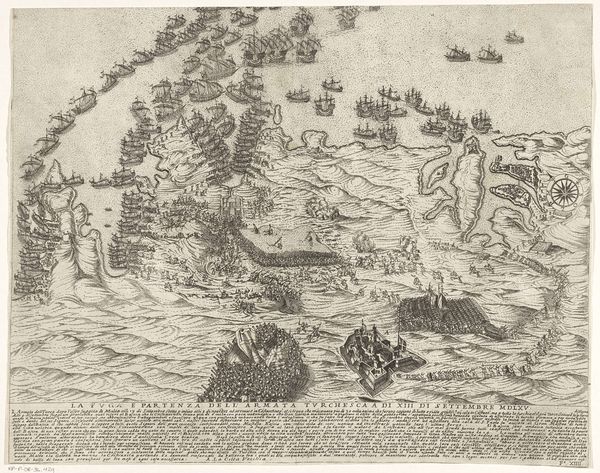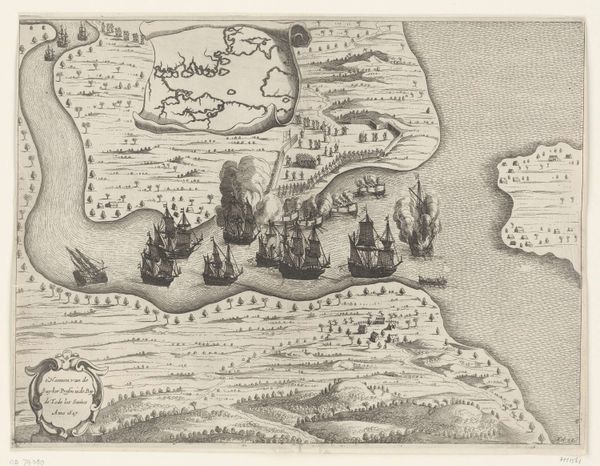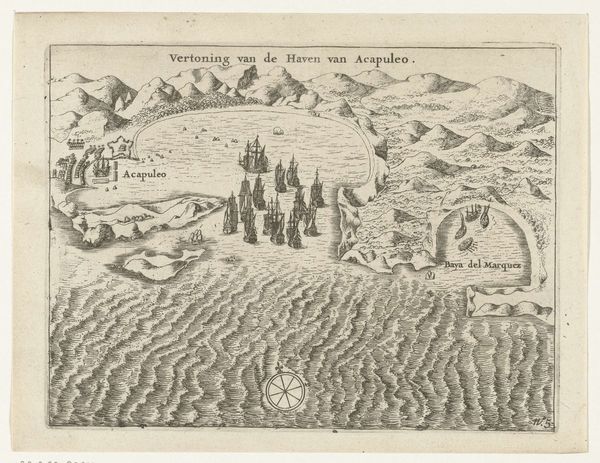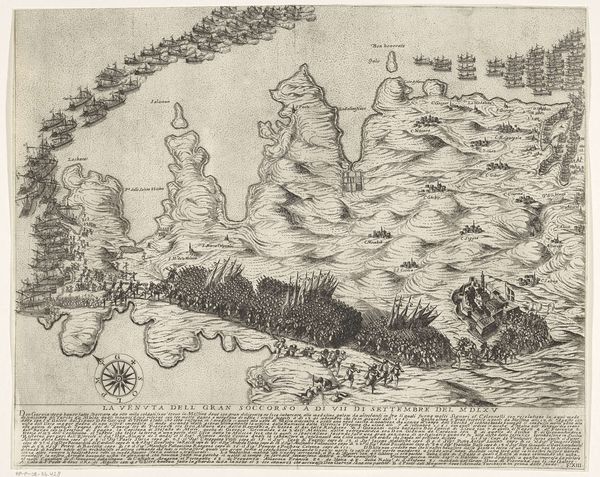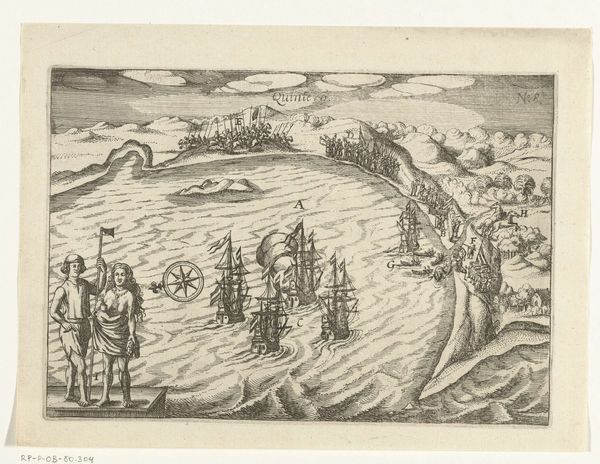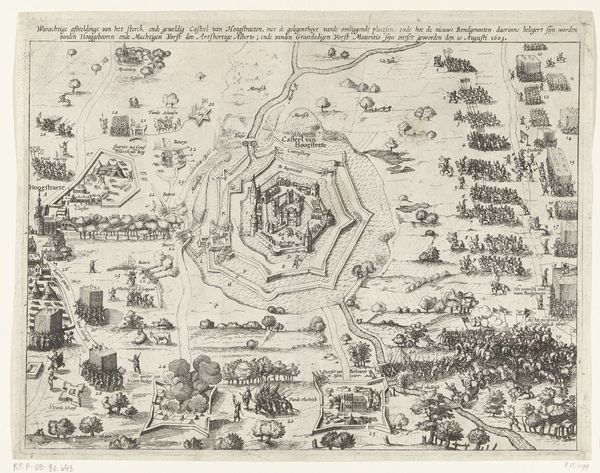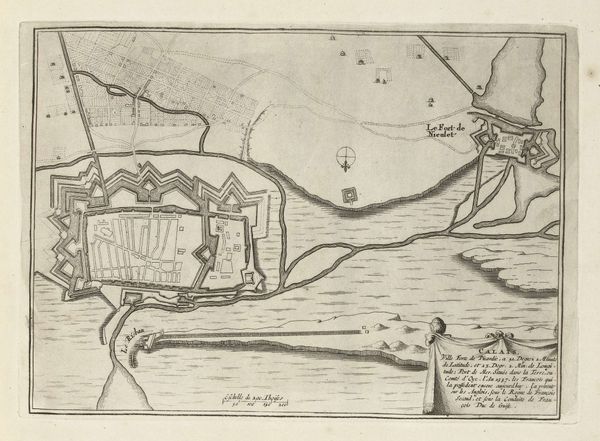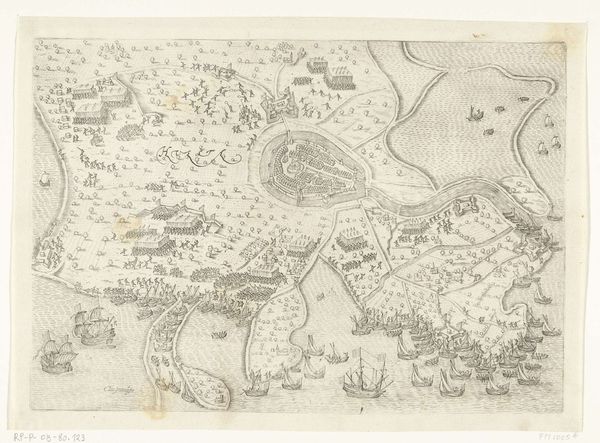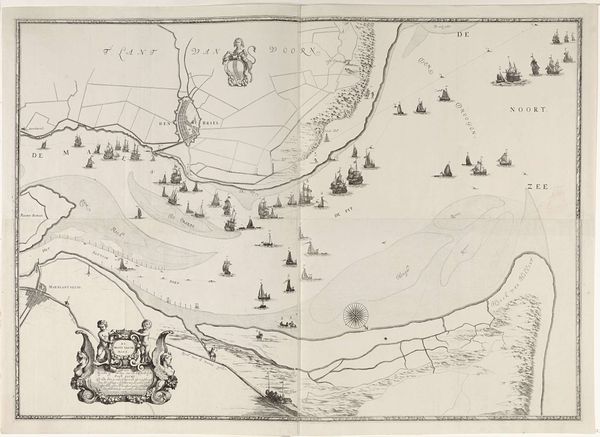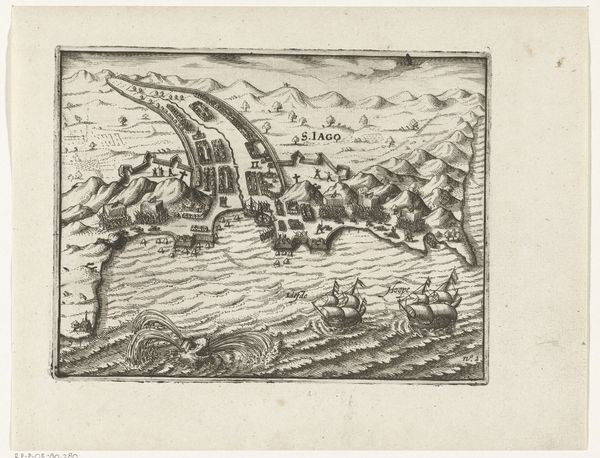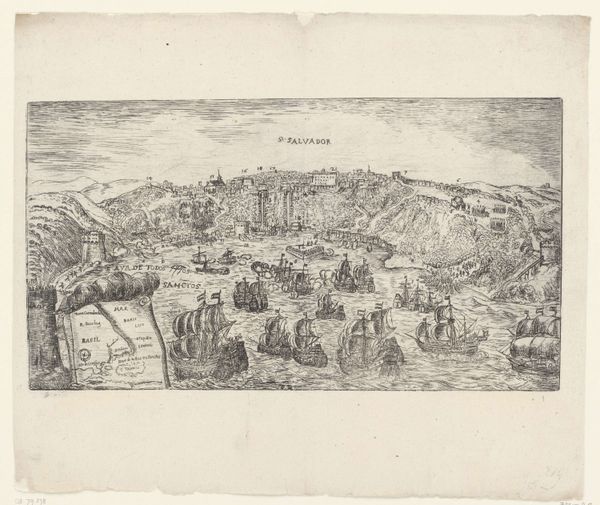
print, engraving
#
baroque
#
pen drawing
#
mechanical pen drawing
# print
#
pen illustration
#
pen sketch
#
landscape
#
pen-ink sketch
#
pen work
#
cityscape
#
history-painting
#
engraving
Dimensions: height 286 mm, width 381 mm
Copyright: Rijks Museum: Open Domain
Curator: What a stark and dramatic cityscape. I'm struck by the visual order despite the apparent chaos of the scene. Editor: Indeed. This print, dating from 1649-1651, depicts the "Conquest of Rio Grande in Brazil, 1633." It's housed here at the Rijksmuseum and attributed to an anonymous artist. It exemplifies Baroque landscape through engraving. Curator: The lines are incredibly precise, almost architectural in their rigidity. Note the clear delineation between land and sea, the geometrically shaped fort juxtaposed against the organic coastline. This meticulous construction, typical for the period, imposes a visual logic, transforming history into a clearly legible narrative. What meaning do you find there? Editor: The meticulousness of the print points to its purpose: likely propaganda, perhaps even serving as a visual report destined for distant investors in the West India Company. Think of the skilled labor that would go into such reproduction, allowing these images to be consumed throughout the Dutch Republic and beyond! What message would you argue that this form is conveying, through the lines, through the mechanical nature of engraving, as part of this mass production? Curator: A glorification of power, naturally! Observe the ships clustered strategically in the bay and the imposing fortress dominating the landscape. It subtly conveys the reach and dominion of Dutch mercantile interests and Dutch skill through material culture. Editor: But doesn’t it flatten the brutal realities of colonialism, reduce human experience to a simple diagram? I see very few human forms depicted, let alone the experience of local indigenous people! This kind of artistic choice renders certain lived realities and the production thereof invisible, as if simply supplied for the Dutch colonizer’s needs. Curator: It certainly offers a particular perspective on history, focusing on the architectural achievements and maritime capabilities associated with the events surrounding that date of 1633. For me it shows an advancement in the formal depiction of warfare and colonial dominance through pure visual language, irrespective of the horrors beneath. Editor: I see it as representing much more the structures of control over production. An artifact such as this helps illustrate a certain process through its lines, revealing much about a bygone culture. What we have here is, on a very material level, not just an artwork but a testament to the manufacturing of power.
Comments
No comments
Be the first to comment and join the conversation on the ultimate creative platform.
